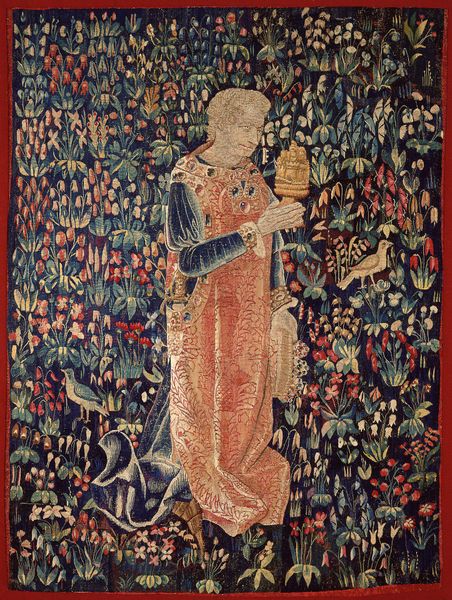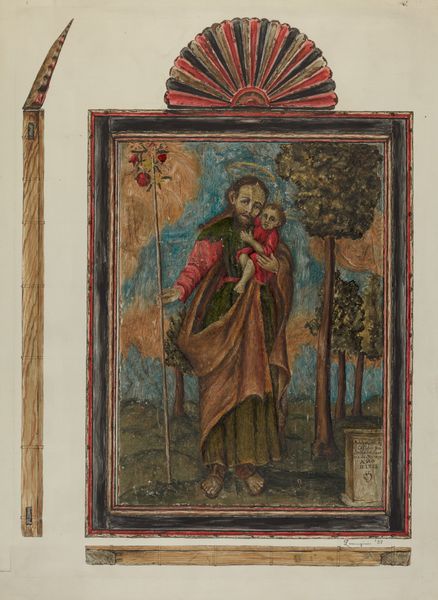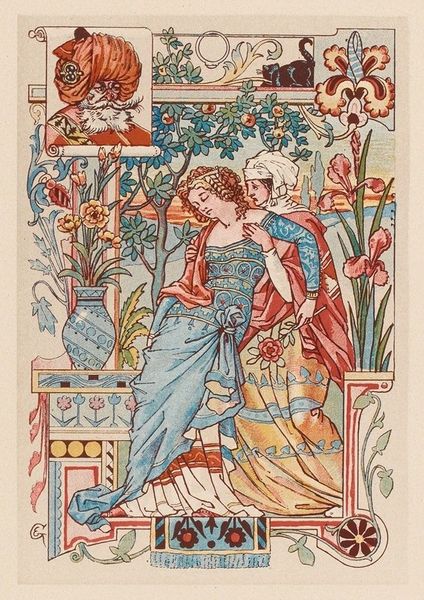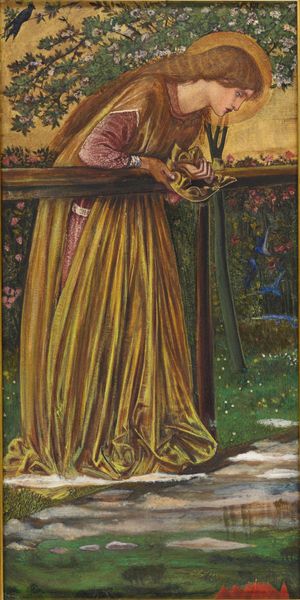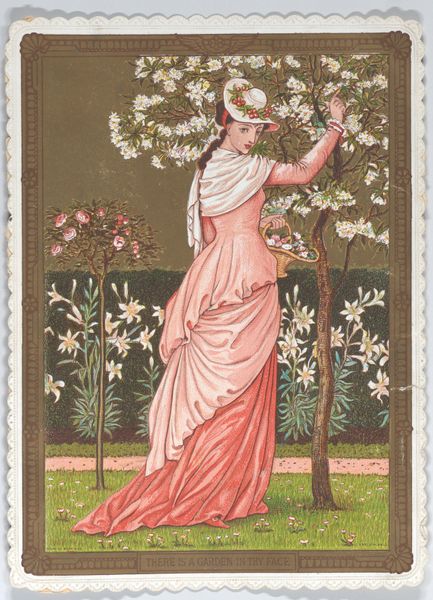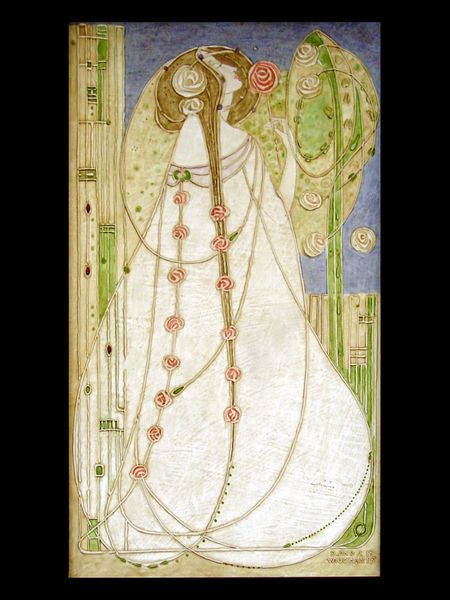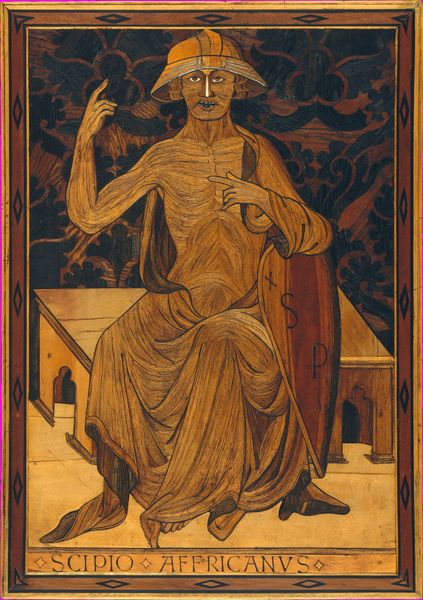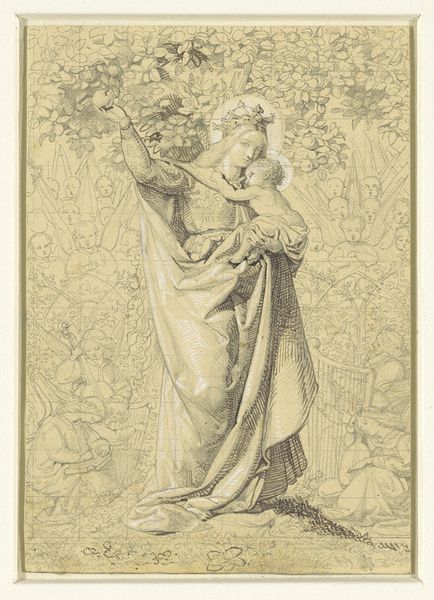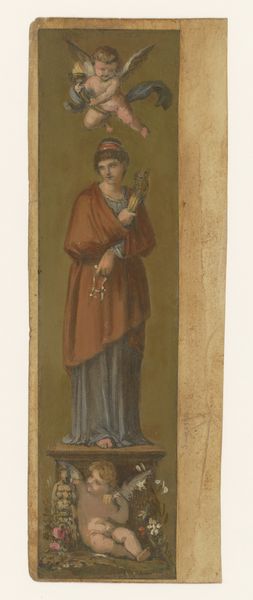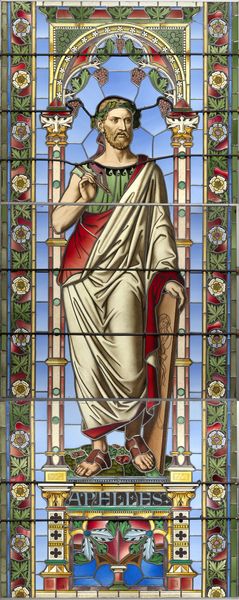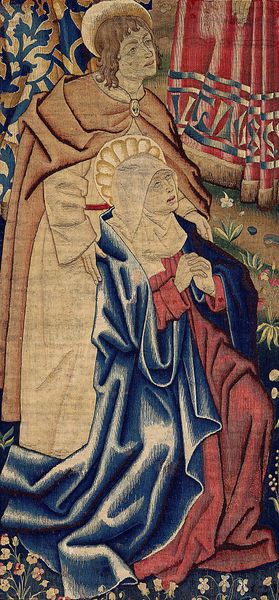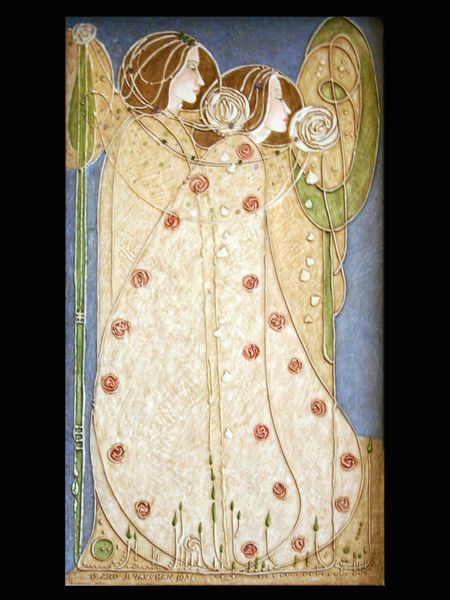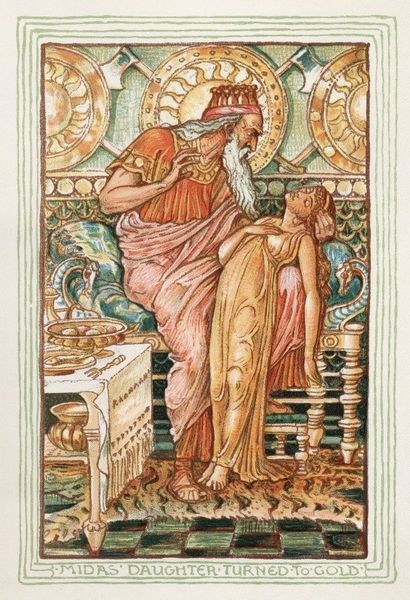
weaving, textile
#
portrait
#
weaving
#
landscape
#
stain glass
#
textile
#
figuration
#
england
#
symbolism
#
pre-raphaelites
#
decorative-art
#
stained glass
#
watercolor
Dimensions: 92.9 × 165.1 cm (36 1/2 × 65 in.)
Copyright: Public Domain
Editor: Here we have "Pomona", a tapestry created by Edward Burne-Jones sometime between 1882 and 1906. I find the stylized flatness of the figure set against the densely patterned background quite striking. How do you approach a piece like this? Curator: Initially, observe the composition. Burne-Jones employs a vertical format, emphasizing the figure of Pomona, the Roman goddess of fruit. The tapestry's success lies in the juxtaposition of the idealized human form against the highly stylized, almost two-dimensional, foliage. Note the color palette: predominantly muted reds, greens, and blues, creating a harmonious yet somewhat melancholic effect. The density of the floral elements presses against the figure, but what do you observe about how the weaving is articulated around the central figure? Editor: I notice the details in her gown. The artist uses many pleats which, even within this flat field of depth, creates volume. And in stark contrast, the tree on the right is very linear and bare, pulling my eyes in different directions. What does this choice of texture signify to you? Curator: Precisely. Burne-Jones is manipulating our perception through contrasts. Consider the intricate floral borders – a common feature in decorative arts. They serve not just as framing devices, but as integral components of the overall design. We should think about how line, colour and surface operate within defined visual limits, it asks questions of surface and depth in pictorial representation. Do you agree? Editor: That’s interesting. The weaving has this inherent flatness to it. I see now how those lines and colours complicate the tapestry form. This piece, it seems to play more with what a weaving _could_ be, rather than how to make the perfect weaving itself. Curator: Precisely. It's a dance between medium and image, between representation and abstraction. Considering the weaving, the choice of natural dyes, the way the threads interact – all contribute to the aesthetic effect, transforming the art object into something of symbolic weight. Editor: Thank you! Looking through the lens of its formal construction really helps appreciate what Burne-Jones achieves with “Pomona”. Curator: A close, descriptive analysis gives clarity, always.
Comments
No comments
Be the first to comment and join the conversation on the ultimate creative platform.
